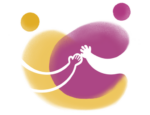A PC Compatible Build
One important thing we learned this week was the fragility of our prototype controllers. After a successful playtest last weekend, our circuitry for the physical controllers had a few connection issues which proved to be time-consuming to fix. We also found it cumbersome to check all of the circuitry prior to presenting impromptu demos of our project or testing in-game functionalities. Consequently our team spent some time this week developing a PC compatible version of our game for quick demos and iteration that can be played with keyboard and mouse.
Additionally, to address the robustness issue of our cardboard prototypes, we have ordered Arduino screw terminal shields which will eliminate the need for solderless breadboards in each of our controllers. Going into the last few weeks, this addition should greatly improve the reliability of our controllers and therefore more closely emulate our intended experience.
User Interface Design
Based on the feedback from our playtest, we iterated on our UI design to provide more clear instructions for the guest.
Here is a short video illustrating a basic version of our new UI.
We showed the demo to our client on Wednesday and recieved their feedback on some final iterations, including color palette, the use of WonderBots in the scene, and the final simulation stage.
The color palate at each stage will be as described in our original UI plan (Week 9). Regarding the WonderBots, each station will be paired with a single WonderBot who acts as a guide through the interaction. WonderBots can explain challenging concepts behind the different activities (thus meeting our educational goal), while still maintaining immersion in our makerspace narrative. Each WonderBot will also have a personality, and we discussed the possibility of hiring voice actors with Ian and Adam.
A key takeaway from last week, the final simulation stage must be more engaging and rewarding. We have spent the past week lengthening the simulation stage and improving the visual communication of the world, including adding more assets to the scene and improving the movement of the train model through it. Although there are still a few bugs, we are very happy with our artistic progress.
Moving forward, the team will start planning for documentation and the final deliverable to wrap up the semester!
